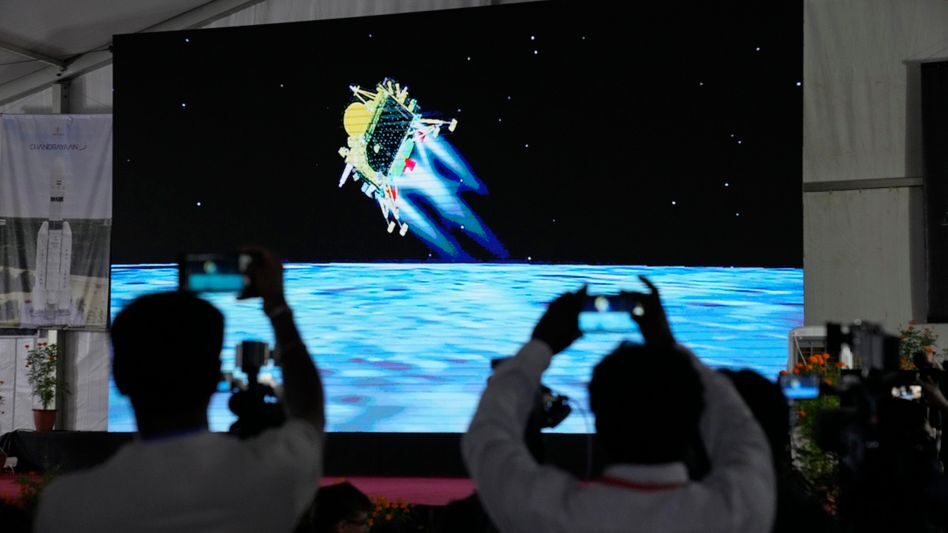
© Aijaz Rahi / APFILE PHOTO: Chandrayaan-3
India's Chandrayaan-3 mission may have just recorded
the first seismic data on the Moon since the 1970s.
If confirmed to be natural seismic data, it could finally help scientists understand how the Moon's insides are arranged.
The rumblings were recorded by the Vikram lander's onboard Instrument for Lunar Seismic Activity (ILSA).
It's the first Micro Electro Mechanical Systems (MEMS) technology-based instrument on the Moon and it was was able to record the seismic rumbles of the mission's Pragyan rover moving around on the surface.
But it also picked up what could be a natural event, such as a quake or an impact.
"ILSA's primary objective is to measure ground vibrations generated by natural quakes, impacts, and artificial events. The vibrations recorded during the rover's navigation on August 25, 2023, are depicted in the figure,"
the Indian Space Research Organisation (ISRO) wrote in a statement.
"Additionally, an event, seemingly natural, recorded on August 26, 2023, is also shown. The source of this event is currently under investigation."
This is tremendously exciting; to date, the best seismic data we have for the Moon was
that collected by the Apollo program in the late 1960s and 1970s.
Scientists have been
itching to get their hands on more, since
we still don't know how the Moon's gizzards are arranged. Seismic data would go a long way to resolving that.
Even though it's only been a few weeks since ISRO landed on the Moon, it's already conducted a bunch of scientific observations and detected the first elements at the south pole.
Now both lander and rover are currently in sleep mode. That's because
it's now night where they are on the Moon, which lasts 14 days or so.
Vikram and Pragyan, like
other lunar missions before them, are solar powered, which means they "sleep" at night, when their batteries can't recharge.
Vikram and Pragyan will emerge from slumber
on 22 September, when they will recommence their explorations of the mysterious south pole of the Moon.
Comment: See also: